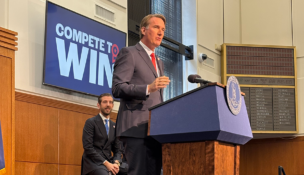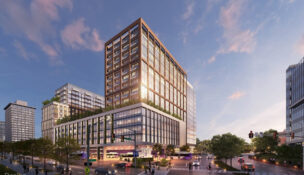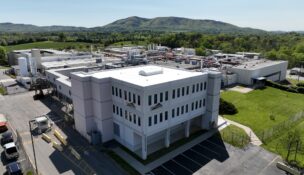Fifth District economy has moderate growth, Fed says
Shortages in labor and supply continue to hamper growth
Fifth District economy has moderate growth, Fed says
Shortages in labor and supply continue to hamper growth
The Federal Reserve‘s Fifth District (including Virginia, North Carolina, South Carolina, West Virginia and Maryland) saw modest growth but was constrained by supply issues and labor shortages, according to the latest edition of the Federal Reserve’s Beige Book, released Wednesday.
The Beige Book is published eight times per year and is based on anecdotal information gathered from the 12 Federal Reserve Banks about economic conditions in their districts. It is compiled from reports by bank and branch directors, as well as interviews with and online questionnaires completed by business contacts, economists, market experts and other sources.
Retailers and trucking companies reported strong demand, and ports had record-breaking volumes, particularly in imports. Manufacturers reported a modest increase in shipments, new orders and backlogs, but low inventory levels due to supply shortages. Although hotels had to limit rooms or services offered because of staffing shortages, leisure travel increased hotel occupancy rates. Residential real estate inventories remained low, but commercial real estate saw increased activity. Banks reported a slight decline in loan demand.
Employment slightly increased in the Fifth District, but businesses continued to face a tight labor supply. Multiple firms reported unfilled job openings and difficulties finding qualified candidates, and several said that their employees received unsolicited job offers from other companies. Some began to look into technology and automation as a result. Wage increases for many companies were higher than the usual year-end increases, and for some, those increases were in addition to others made earlier to attract and retain employees.
In recent weeks, price growth increased from its already elevated rate. On average, service sector firms saw received prices up by more than 6% compared to last year. Respondents reported raising wages and passing their increased labor costs through to final prices. Manufacturers also reported strong growth in prices paid and received, with freight and energy as the sources of some of the largest cost increases.
Manufacturers saw a moderate increase in shipments and new orders followed by increased backlogs. They reported continued low inventories of raw materials and finished goods and lengthening lead times for multiple components.
Fifth District ports continued to have record-breaking volumes driven by imports. The volumes of exports were down slightly except for those for farm equipment. Several ports received diversion from other East Coast ports due to congestion. Most ports said they were running at or over capacity and did not expect the U.S. container capacity to increase until at least 2023. Shortages in transportation equipment and warehouse space left imports sitting at ports and rail yards.
Trucking companies noted unusually strong demand for this time of year across both the industrial and retail sectors, although some turned away business because of driver and equipment shortages. Employment and equipment costs rose, but the companies have been able to pass them to customers.
Increased customer traffic put retailers on track to meet 2019 sales. They reported passing on the higher costs of goods and labor. Auto dealers benefitted from the high prices of used vehicles and increased demand for service on existing cars, but new car sales were down from continued low supply.
Leisure travel bolstered the travel and tourism sector. Staff shortages, however, led hotels to hold back rooms or limit services. Restaurants also had to limit their options because of staff shortages, reducing hours or days of service. They reported reducing their menus because of supply chain disruptions.
The residential real estate market experienced a seasonal slowdown but remained strong. Average days on the market increased slightly. Rising construction costs, long waits for materials and equipment and labor shortages continued to slow construction.
The commercial real estate market had moderately increased activity. The industrial sector saw low vacancy rates and rising sale prices and rental rates. Office leasing slightly improved, but tenants remained hesitant, mainly signing short term lease renewals.
Banks cited a seasonal slowdown in overall low demand that the omicron variant of COVID-19 might have contributed to. Limited supply slowed mortgage lending and auto lending. Commercial real estate and business lending remained steady.
n
















